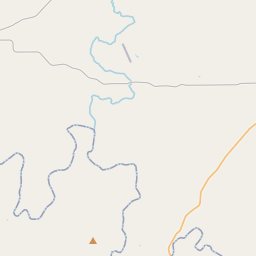Confederate Veterans Memorial of Mills County
Historical marker location:






C.S.A. 1861-1865 James Thomas Guthrie Pvt 13th TX CAV Co. E David Morris Frontier Protection Wm. D Rudd Co. D 45th Reg Inf Daniel H. Trent Co. E, 31st TX Brigade TST George W. Trent Co. E, 31st TX Brigade TST Josiah G. Trent Co. E, 31st TX Brigade TST Henry A. Atkinson Sgt Co. I, 2nd Reg Ark Inf Hiram C. Dunlap Pvt Co. G 31st Reg TX Cav C. C> Chesser Cpl Co. D 16th Inf TX
April 12, 1861: The Civil War begins with the Confederate attack on Fort Sumter, located in South Carolina's Charleston Harbor.
April 15, 1861: President Abraham Lincoln issues a call for 75,000 volunteers to serve in the Union Army to suppress the rebellion.
May 24, 1861: The first major land battle, known as the First Battle of Bull Run (or First Battle of Manassas), takes place in Virginia. It ends in Confederate victory.
September 17, 1862: The Battle of Antietam in Maryland becomes the bloodiest single-day battle in American history, with heavy casualties on both sides. The Union forces, commanded by General George McClellan, manage to halt Confederate General Robert E. Lee's advance into Union territory.
January 1, 1863: President Lincoln issues the Emancipation Proclamation, declaring that all slaves in Confederate-held territories are to be set free. However, the proclamation does not immediately free all slaves in the United States.
July 1-3, 1863: The Battle of Gettysburg in Pennsylvania takes place, resulting in a significant Union victory and inflicting heavy casualties on Confederate forces. It marks a turning point in the war.
November 19, 1863: President Lincoln delivers the Gettysburg Address, emphasizing the principles of liberty, equality, and the preservation of the Union.
April 9, 1865: General Robert E. Lee surrenders to Union General Ulysses S. Grant at Appomattox Court House in Virginia, effectively ending the Civil War.
April 14, 1865: President Lincoln is assassinated by John Wilkes Booth while attending a play at Ford's Theatre in Washington, D.C.
May 10, 1865: Confederate President Jefferson Davis is captured, signaling the collapse of the Confederate government.
December 6, 1865: The Thirteenth Amendment to the United States Constitution is ratified, officially abolishing slavery throughout the country.
While this timeline provides an overview of key events, it is important to note that the Civil War spanned over four years, from 1861 to 1865, and encompassed numerous battles, campaigns, and political developments that shaped the course of American history.
As one of the most visible programs of the Texas Historical Commission (THC), historical markers commemorate diverse topics in Texas history, including: the history and architecture of houses, commercial and public buildings, religious congregations, and military sites; events that changed the course of local and state history; and individuals who have made lasting contributions to the state, community organizations, and businesses.
Texas has been a major oil-producing state for over a century. The first big oil discovery in Texas was the Spindletop field near Beaumont in 1901, which set off a massive oil boom that transformed the state's economy and made Texas one of the wealthiest states in the country.
In 1854, Mills County was officially established by the Texas legislature and named after John T. Mills, a lawyer and soldier who fought in the Texas Revolution. The county's development was primarily driven by agriculture, with cotton becoming the dominant crop. The arrival of the railroad in the late 1800s further boosted the local economy, enabling the transportation of goods and facilitating trade.
With its rich soil and favorable climate, Mills County prospered throughout the late 19th and early 20th centuries. However, like many rural areas during this time, it faced challenges such as droughts, economic downturns, and the Great Depression. These hardships impacted the county's agricultural sector and led to a decline in population.
Despite these challenges, Mills County has maintained its unique character and close-knit community throughout the years. Today, it is known for its beautiful landscapes, historic sites, and outdoor recreational opportunities. The county continues to be influenced by its agricultural heritage while embracing the modern era, making it an interesting and dynamic place to live and visit.
Mills County Timeline
This timeline provides a concise overview of the key events in the history of Mills County, Texas.
- 1837 - Mills County is established and named after Texas Governor Branch Tanner Archer.
- 1849 - Gold is discovered in the county, leading to a short-lived gold rush.
- 1854 - Mills County becomes a part of the newly formed Brown County.
- 1876 - Mills County is reestablished as an independent county.
- 1880 - The county seat is established in Goldthwaite.
- 1920s - The oil industry has a significant impact on the local economy.
- 1947 - Mills County celebrates its centennial.
- 1965 - A severe flood causes significant damage to the county.
- 1990s - The county experiences economic growth due to an increase in tourism.
- 2018 - Mills County celebrates its 181st anniversary.